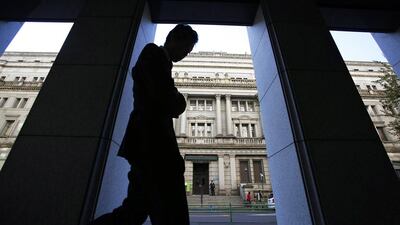From the start of the year, central banks have been fighting to ensure that their currencies maintain a competitive exchange rate in the market. With the global economy showing signs it is slowing again, a strong currency reduces the competitiveness of industry and exports, so the banks instinctively want to keep their currency under pressure.
Since the 2008 financial downturn, we have seen the development of divergent policies from central banks around the world. These policies have ranged from printing money and adopting stimulus packages through to more aggressive action such as the devaluation of currencies.
The question has now become: as oil continues to lose value and volatility in equity markets unsettles investors, what else can the banks do?
The answer is that they are opting for more radical interventions, including introduction of negative interest rates.
The Swiss National Bank was among the first of the central banks to introduce negative rates, when it took the decision last year to de-peg the Swiss franc from the euro, causing a notable move in Swiss franc pairs across the board.
Still, last week’s move by the Bank of Japan to take its rate to minus 0.1 per cent surprised the majority of market commentators and investors.
The BoJ’s decision was not good news for other central banks that have also been devaluing their currency to stimulate their economies. Indeed, we have entered a new phase in the currency wars – and we are waiting to see who responds next and by how much.
Before the BoJ acted, the yen had been steadily strengthening, reaching ¥115.9 to the US dollar. This was in part thanks to an improved economy.
But a surge in the yen began to threaten Japan’s already fragile recovery, forcing the bank to act. The introduction of a negative interest rate caused the yen to fall to ¥122.4, a 3 per cent loss, within minutes of the announcement. It has now moved back to ¥120.8, but remains a long way from the year’s high.
A move of this size creates waves and other central banks will be looking carefully at their own economic performance.
As the Chinese New Year holiday in Asia approaches, investors are looking for the People’s Bank of China (PBoC) to inject further liquidity in to the system to avoid the squeeze of last year. But because of the BoJ’s decision, it might decide to devalue the yuan faster than anticipated to maintain its competitiveness. Recent weaker-than-expected manufacturing data, for the sixth month in a row, will have put more pressure on the bank.
Since 2013, the PBoC has been intervening and devaluing. In August that year, it took the yuan from 6.21 to 6.51 to the dollar (a 5 per cent change) and from December last year to January this year, it moved the yuan from 6.49 to 6.69, a further 3 per cent.
Usually, the PBoC intervenes on Fridays and it is possible it could act tomorrow, ahead of the New Year holiday.
If it does act, we expect the bank to be more aggressive with its short- and medium-term liquidity facilities. But this would then cause other central banks to respond in the coming months.
If this happens, the next phase in the global currency wars would be under way and we should prepare for news of more negative interest rates across a range of currencies.
Nour Eldeen Al Hammoury is the chief market strategist at ADS Securities.
business@thenational.ae
Follow The National's Business section on Twitter

